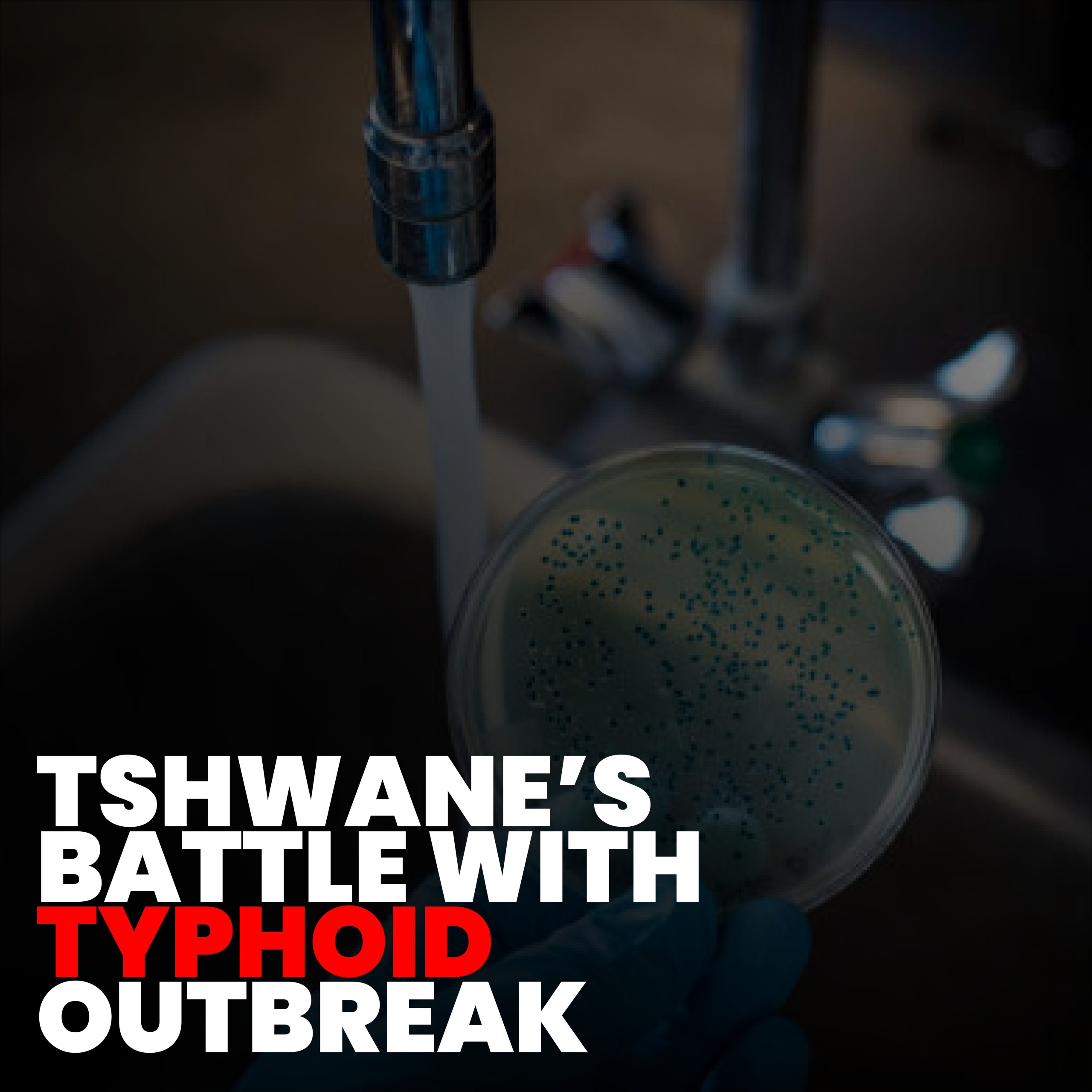
Introduction
The Typhoid Surge in Tshwane has drawn significant attention as cases of typhoid fever spike, particularly in the communities of Hammanskraal and Bronkhorstspruit. The outbreak, largely attributed to unsafe water and inadequate sanitation, has raised urgent questions about the state of water safety in the area. This article delves into the causes of the surge, the challenges it presents, and six essential actions that need to be taken to prevent further cases and ensure the health and safety of Tshwane’s residents.
Typhoid Surge and the Water Crisis in Tshwane
The Typhoid Surge in Tshwane is a direct result of the area’s ongoing water safety issues. In Hammanskraal, residents are reliant on untreated or inadequately treated water sources, leading to frequent outbreaks of waterborne diseases like typhoid fever. Typhoid fever, caused by the Salmonella typhi bacteria, spreads through contaminated water and food. With the rising number of cases, local authorities must address the lack of access to safe drinking water to stop the disease from spreading further.
Typhoid Surge and Immediate Water Quality Improvements
The most immediate and essential action to address the Typhoid Surge is to improve the water quality in the affected areas. Local health authorities must urgently implement measures to ensure that drinking water is properly treated and safe for consumption. This may include temporary provision of bottled water, installation of mobile filtration units, and urgent repairs to failing infrastructure. Public health education about boiling water and avoiding untreated sources must accompany these measures to minimize further risk.
Typhoid Surge and the Need for Infrastructure Overhaul
The long-term solution to the Typhoid Surge in Tshwane lies in an overhaul of the region’s water infrastructure. Hammanskraal and Bronkhorstspruit have long struggled with outdated and underfunded water systems. For sustainable change, the government must allocate more resources to upgrading water treatment plants, replacing old pipes, and improving sewage treatment systems. This comprehensive upgrade will not only help prevent typhoid outbreaks but also improve overall sanitation in the area.
Typhoid Surge and Strengthening Disease Surveillance
An essential part of controlling the Typhoid Surge is strengthening disease surveillance systems in Tshwane. Early detection of typhoid cases can significantly reduce the spread of the disease. Local healthcare facilities need better access to diagnostic tools and increased staffing to handle an influx of patients. Real-time data collection and reporting will help health officials track the spread of the disease and deploy resources where they are needed most.
Typhoid Surge and Public Awareness Campaigns
Public awareness is a vital factor in controlling the Typhoid Surge. Many residents may not fully understand the risks associated with unsafe water or how to protect themselves from waterborne diseases. Health campaigns focusing on safe water practices, such as boiling water and hand hygiene, are essential in preventing the further spread of typhoid fever. Community leaders, schools, and local media should work together to disseminate this critical information and encourage safe practices.
Effective Government Response
An effective and coordinated government response is critical to combating the Typhoid Surge. Local, provincial, and national authorities must work together to allocate resources, coordinate water safety initiatives, and ensure that healthcare systems are equipped to handle the outbreak. Transparent communication between the government and the public is also crucial for maintaining trust and encouraging people to seek timely medical care. Without strong leadership, the outbreak could spiral out of control, leading to more widespread illness and loss of life.
Typhoid Surge and Improving Access to Healthcare
The Typhoid Surge has put significant pressure on local healthcare facilities, which are already struggling with limited resources. Access to healthcare must be improved to ensure that patients with typhoid fever receive the necessary treatment as early as possible. This can be achieved by expanding access to medical care in affected communities, providing mobile clinics, and increasing the availability of essential medicines. Additionally, healthcare professionals must be trained to recognize and treat typhoid fever quickly to minimize complications and fatalities.
Typhoid Surge and the Role of the Private Sector
While government action is essential, the private sector can also play a significant role in addressing the Typhoid Surge. Private companies can contribute by donating resources such as bottled water, medical supplies, and financial support for healthcare services. Additionally, private businesses involved in water purification and sanitation could collaborate with the government to provide solutions that improve water quality in the affected areas. Public-private partnerships could accelerate the response to the outbreak and offer sustainable solutions in the long term.
Typhoid Surge and Long-Term Health Infrastructure Investment
The Typhoid Surge highlights the need for long-term investment in health and sanitation infrastructure. Building resilient water systems and ensuring that all communities have access to safe drinking water is critical for preventing future outbreaks. The government should prioritize investments in health infrastructure, particularly in underserved areas like Hammanskraal and Bronkhorstspruit, where access to clean water and sanitation remains a significant challenge. Only by addressing these underlying issues can the region effectively prevent future typhoid outbreaks and improve overall public health.
FAQs
What is causing the Typhoid Surge in Tshwane?
The Typhoid Surge is caused by contaminated water sources in areas like Hammanskraal and Bronkhorstspruit, where inadequate sanitation and untreated water have led to the spread of typhoid fever.
How can the Typhoid Surge be prevented?
Preventing the Typhoid Surge requires improvements in water treatment, better sanitation practices, public health education, and stronger disease surveillance systems.
What actions are being taken to address the Typhoid Surge?
Authorities are working to improve water safety, provide clean water sources, strengthen healthcare systems, and raise public awareness to reduce the spread of the disease.
Conclusion
The Typhoid Surge in Tshwane is a serious health crisis that demands urgent action. By addressing water safety, improving healthcare access, and investing in long-term infrastructure, the region can not only contain the current outbreak but also prevent future occurrences. Effective government coordination, public-private partnerships, and public awareness campaigns are critical to managing this crisis and safeguarding the health of Tshwane’s residents.


